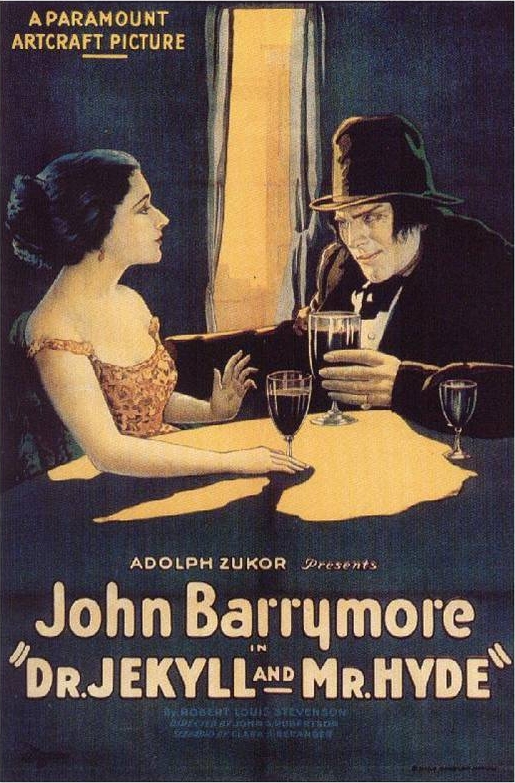Pages
▼
Friday, December 9, 2016
Dr. Jekyll and Mr. Hyde (John S. Robertson, 1920)
Almost from the moment that Robert Louis Stevenson published his novella Strange Case of Dr Jekyll and Mr Hyde in 1886, theatrical producers were snapping it up for adaptation. It was a great vehicle for ham actors who relished the transformation scenes, as long as it could be spiced up a little with a little sex -- the novella is more interested in the psychology of Jekyll/Hyde than in the lurking-horror and damsels-in-distress elements added to most stage and screen versions. There were several film versions before John Barrymore, the greatest of all ham actors, took on the role in 1920. It's an adaptation by Clara Beranger of the first major stage version by Thomas Russell Sullivan, who added a central damsel in distress as Jekyll's love. She's called Millicent Carewe (Martha Mansfield) in the film, which also adds a "dance hall girl" named Gina (Nita Naldi) to the mix. Mansfield is bland and Naldi is superfluous, though rather fun to watch when she goes into her "dance," which consists of a lot of hip-swinging and arm-waving. Barrymore, however, is terrific, giving his transformation into Hyde everything he's got in the way of contortions of face and body. Though the screenplay makes much of the distinction between the virtuous Jekyll and the dissolute Hyde, Barrymore manages to suggest the latency of Hyde in Jekyll even before he swallows the sinister potion -- a reversion to Stevenson's original, in which Jekyll is not quite the upstanding fellow the adaptations tried to make him.
Charles Matthews
